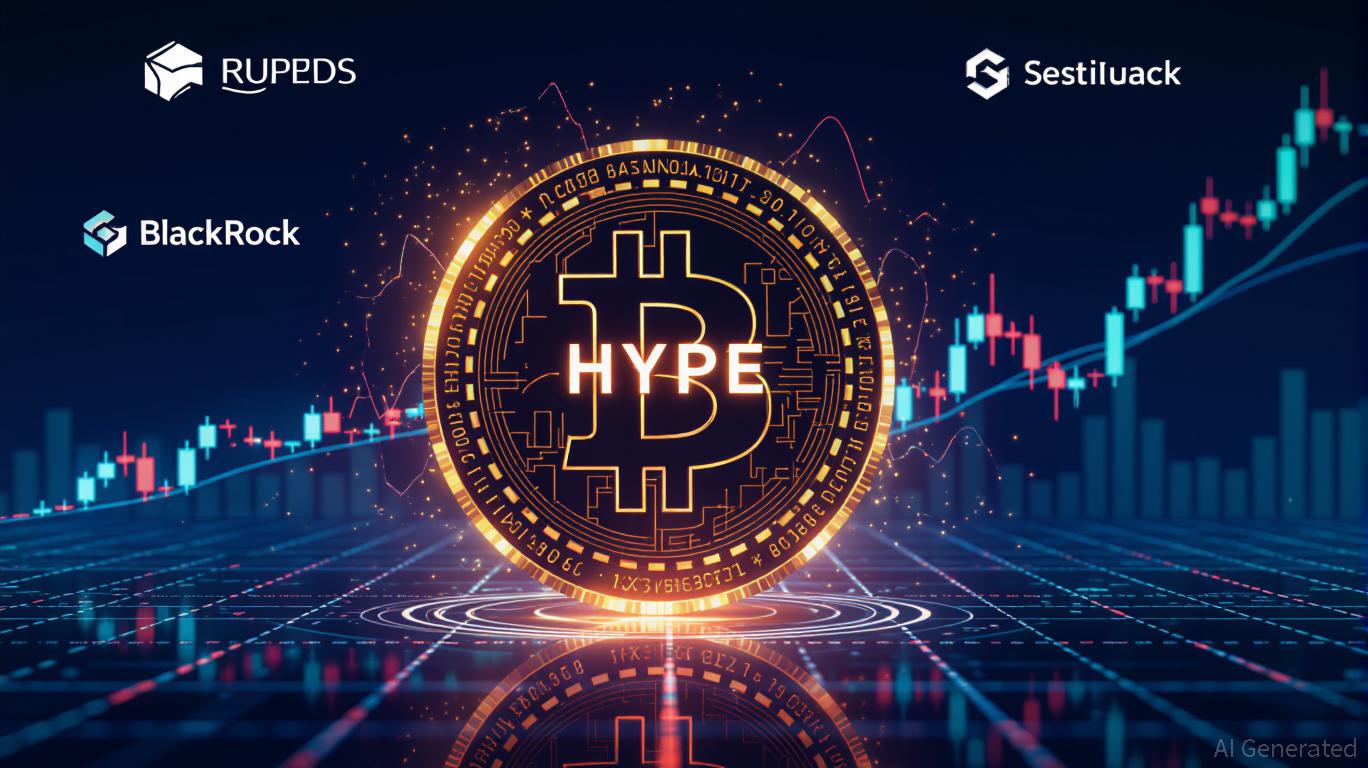Evaluating How Vitalik Buterin’s Support for ZKsync Influences Layer-2 Adoption and Shapes Sentiment in the Crypto Market
- Vitalik Buterin's X post endorsing ZKsync triggered a 143% surge in $ZK, highlighting L2 scalability's market impact. - ZKsync's 'Atlas' upgrade, leveraging GKR protocol, achieved 43,000 TPS with low fees, addressing Ethereum's scalability. - Institutional partnerships (Citi, Deutsche Bank) and Prividium's hybrid model drive ZK Layer 2 market to $90B by 2031. - Buterin's endorsement validates ZKsync's role in Ethereum's roadmap, boosting investor confidence in L2 solutions.
Technical Breakthroughs and Market Validation
ZKsync’s latest “Atlas” update, which brought institutional-level scalability and cross-chain compatibility, set the stage for Buterin’s recognition. By incorporating the GKR protocol—a zero-knowledge verification system co-created by Buterin—the upgrade slashed verification expenses by up to 15 times, allowing for transaction throughput of 43,000 TPS with very low fees Vitalik Buterin's Latest ZK-Focused Statement and What It ..., [bitget.com] [ 1 ]. This major technical advance not only tackles Ethereum’s persistent scalability issues but also positions
The market reacted quickly. After Buterin’s post, $ZK jumped 143% within two days, with ZKsync’s market capitalization briefly exceeding $600 million. This volatility highlights the token’s speculative nature, but also signals increasing confidence from major institutions. For example, Deutsche Bank and Sony have already implemented ZK-rollups to enhance regulatory compliance and transaction efficiency Vitalik Buterin's Latest ZK-Focused Statement and What It ..., [bitget.com] [ 1 ], indicating a move from experimental applications to real-world business adoption.

Institutional Adoption and Hybrid Ecosystems
ZKsync’s “Prividium” project further boosts its strategic importance. This private, permissioned Layer 2 solution merges institutional privacy with public transparency, drawing over 30 major financial institutions—including Citi, Deutsche Bank, and Mastercard—to participate in pilot programs. Such collaborations are essential for connecting traditional finance (TradFi) with decentralized finance (DeFi), a movement expected to propel the
Buterin’s support significantly enhances the credibility of these efforts. His focus on ZKsync’s impact on “liquidity flows on Ethereum-based L2 networks” is in line with major Ethereum upgrades, such as the upcoming Cancun-Deneb hard fork, which aims to improve data availability and rollup performance Ethereum Founder Vitalik Buterin Triggered 120% ZkSync .... Investors who get involved early in projects that align with Ethereum’s roadmap—especially those with strong institutional ties—stand to gain from the compounding growth as hybrid TradFi-DeFi systems evolve.
Strategic Investment Considerations
The present market climate marks a pivotal moment. While ZKsync’s token rally has been marked by volatility, it reflects a broader trend of increasing L2 adoption. Still, investors should temper enthusiasm with prudence. The 143% rise in $ZK’s value, though remarkable, also points to its vulnerability to speculative swings. Diversifying investments across Ethereum ecosystem projects that combine technical innovation with institutional support can help manage risk while taking advantage of long-term opportunities.
Additionally, ZKsync’s emphasis on asset tokenization and cross-chain compatibility fits with larger shifts in the crypto sector. As regulations develop, platforms offering compliance-friendly features (such as Prividium) are likely to lead the market. This positions ZKsync not just as a strong L2 contender, but as a key force in shaping Ethereum’s future expansion.
Conclusion
Vitalik Buterin’s endorsement of ZKsync goes beyond a simple social media mention—it affirms the platform’s technical excellence and its alignment with Ethereum’s scaling ambitions. The resulting price rally and institutional collaborations highlight a broader industry movement toward L2 solutions that can support enterprise-scale operations. For investors, this is a rare chance to benefit from a bullish catalyst as Ethereum’s ecosystem strengthens its role as the foundation of Web3.
With the ZK Layer 2 sector on track to reach a $90 billion valuation by 2031, strategic investments in innovators like ZKsync—supported by cryptographic breakthroughs and institutional interest—are poised to excel in a market increasingly shaped by the convergence of traditional and decentralized finance.
Disclaimer: The content of this article solely reflects the author's opinion and does not represent the platform in any capacity. This article is not intended to serve as a reference for making investment decisions.
You may also like
The Growing Importance of Education in Influencing Future Workforce Developments and Investment Prospects
- Education and employment are converging as tech, healthcare , and renewable energy reshape workforce demands, prompting universities to overhaul curricula with AI, data science, and digital skills. - Investors are capitalizing on AI-driven edtech platforms and healthcare AI diagnostics, with U.S. edtech funding surging to $2.9B in 2024, reflecting growing demand for tech-savvy professionals. - Renewable energy’s $623B 2023 investment boom highlights skilling initiatives like ComEd’s Power Up Academy and

HYPE Token Price Fluctuations and Institutional Attitudes in the Crypto Market: Weighing Immediate Risks Against Future Opportunities
- HYPE token's 2025 price swings ($24.51-$57.38) highlight crypto's short-term volatility driven by whale activity, token unlocks, and market jitters. - Hyperliquid's 70-80% DEX futures market dominance stems from 90% fee cuts, $47B weekly volumes, and partnerships with BlackRock/Stripe for USDH stablecoin. - Institutional adoption via 21Shares' SEC ETF proposal and $1B treasury buybacks aim to stabilize HYPE, though regulatory uncertainty remains a key risk. - Analysts project $30-$60 stabilization by 202

Exploring New Challenges in Cryptocurrency Portfolio Management
- 2025 crypto landscape balances innovation with rising token scams, driving stricter regulatory enforcement and operational safeguards. - DOJ/SEC actions against fraudsters like Roger Ver and ByBit hackers, plus UK FCA sandboxes, highlight global accountability trends. - Blockchain analytics tools (TRM Labs, Chainalysis) enable real-time AML/KYC compliance and $2.17B+ stolen fund recovery through AI-driven monitoring. - FINRA/Georgetown and university programs build crypto literacy, while Kryptosphere-Del
COAI Price Reduction and Its Impact on Clean Energy Markets
- COAI Index's 88% November 2025 drop exposed crypto AI and clean energy market vulnerabilities, triggered by C3.ai's leadership crisis and $116.8M Q1 loss. - Regulatory ambiguity from the CLARITY Act and corporate governance failures forced capital flight to stable AI infrastructure stocks like Celestica (5.78% weekly gain). - U.S. clean energy investment fell 36% in H1 2025 due to policy uncertainty, contrasting with Europe's $30B offshore wind surge amid Trump-era fossil fuel/nuclear shifts. - CCUS, blu
